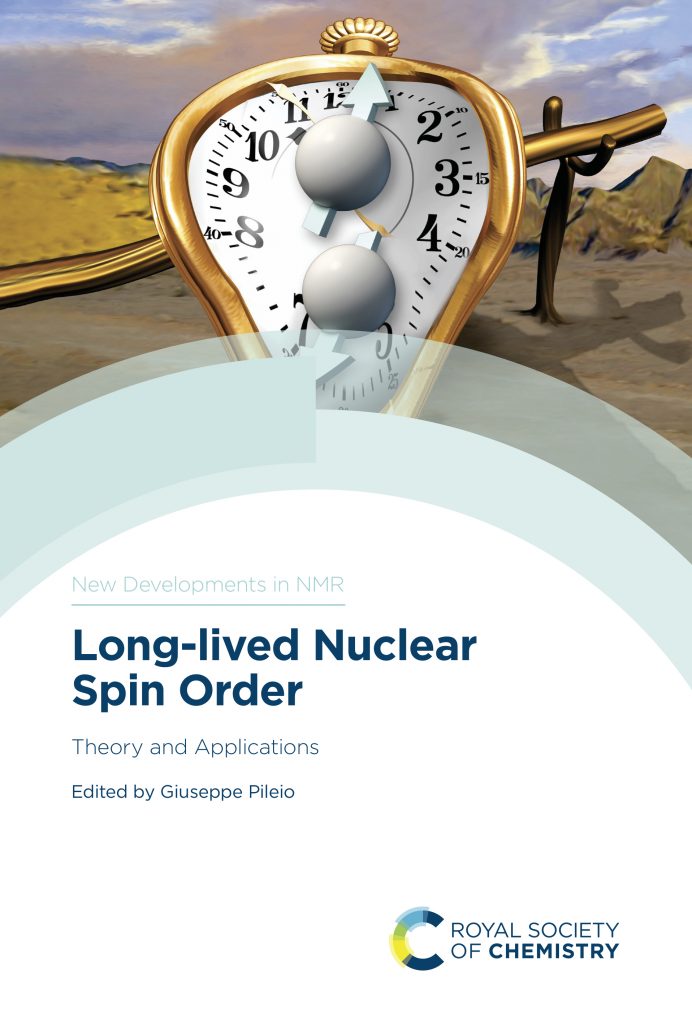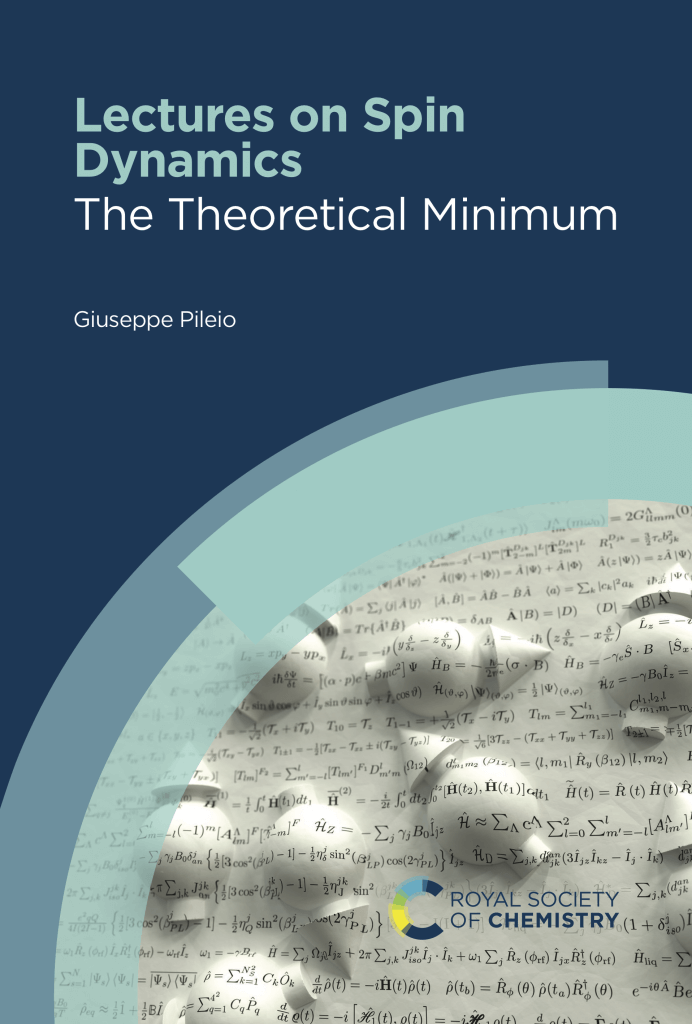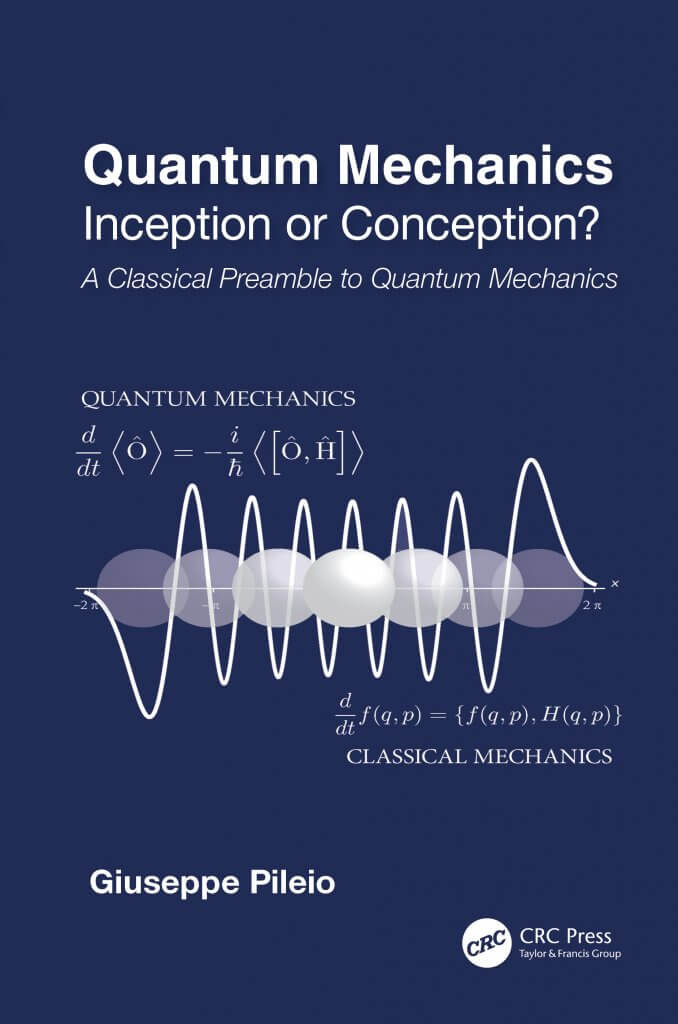My edited book on long-lived nuclear spin order, published by the Royal Society of Chemistry is out for sale (more info here)

The idea that a long-lived form of spin order, namely singlet order, can be prepared from nuclear spin magnetisation first emerged in 2004. The unusual properties of singlet order–its long lifetime and the fact that it is NMR silent but interconvertible into other forms of NMR active order—make it a ‘smart tag’ that can be used to store information for a long time or through distant space points. It is not unexpected then, that since its first appearance, this idea has caught the attention of research groups interested in exploiting this form of order in different fields of research spanning from biology to materials science and from hyperpolarisation to quantum computing.
This first book on the subject gives a thorough description of the various aspects that affect the development of the topic and details the interdisciplinary applications. The book starts with a section dedicated to the basic theories of long-lived spin order and then proceeds with a description of the state-of-the- art experimental techniques developed to manipulate singlet order. It then concludes by covering the generalisation of the concept of singlet order by introducing and discussing other forms of long-lived spin order.
My textbook on the dynamics of nuclear spins published by the Royal Society of Chemistry is out for sale (more info here).

The book contains a small number of typos, please find an updated list here. If you find more typos and indeed any errors please do not hesitate to contact me at g.pileio@soton.ac.uk
This book consists of a series of lectures introducing what the author believes to be the theoretical minimum for the understanding of nuclear spin dynamics, the branch of physics underpinning magnetic resonance techniques such as NMR and MRI. Spin dynamics ultimately concern the study of the state and time evolution of systems made by a large collection of particles possessing spin, one of the most subtle and indeed fascinating concepts in relativistic quantum mechanics and whose understanding requires a mix of quantum mechanics, Hamiltonian dynamics and advanced mathematics. Written in the concise and direct style appropriate for university lectures, this book is addressed to both undergraduate and postgraduate students who are approaching magnetic resonance studies and want to reach the theoretical minimum required to understand the wider topic and its main applications. The book is suitable for researchers who work in the field of magnetic resonance and want to know more about its theoretical fundamentals. Finally, built as a complete set of 12 lectures and 4 workshops, the book can act as a solid reference to lecturers of magnetic resonance university modules. Trained in a world-leading research laboratory internationally recognised for its contributions to the NMR field, the author has a track record in theoretical and methodological developments of nuclear spin dynamics. In this book, he tries to merge his passion for the understanding of physics through its mathematical rendering with his personal quest for the elegance of a clean, clear and satisfactory explanation.
My textbook on the Classical Mechanics underpinning Quantum Mechanics will be published by CRC Press (T&F) on Feb 2024 (more info here).

Embarking on a journey into the realm of quantum mechanics can be a daunting task for anyone. Its puzzling mathematics and bewildering predictions often leave individuals feeling confused and disheartened. But what if there was a different approach―one aimed to cultivate an understanding of quantum mechanics from its very foundations? This is the ambition of this book.
Rather than treating quantum mechanics as an inception, the author takes a Socratic perspective, tracing the genesis of its key ideas back to the well-established roots of classical mechanics. The works of Lagrange, Hamilton, and Poisson become guiding lights, illuminating the path toward comprehension. Through a colloquial yet pedagogical narrative, the book delves into the elements of classical mechanics, building a solid framework of familiarity that paves the way for comprehending quantum mechanics.
Designed as a companion for undergraduates undertaking quantum mechanics modules in physics or chemistry, this book serves as an invaluable support. It equips learners with the essential knowledge necessary to grasp the foundations of quantum mechanics. As such, it proves equally beneficial for MSc and PhD scholars, and post-doctoral researchers. Its colloquial tone captivates the curiosity of any reader eager to delve into the mysteries of this enthralling field
.
